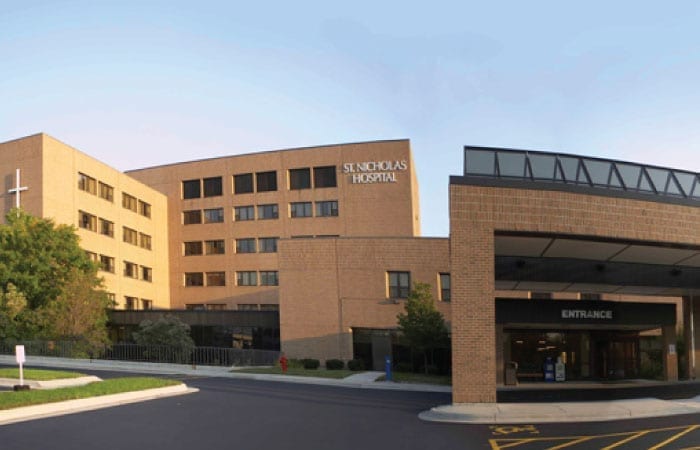Working remote neurologist jobs gives physicians the opportunity to make a difference in patients’ lives all over the country from home. These doctors are on the front lines of improving access to specialty care in areas where it is often not available. Why?
The shortage in neurologists exists worldwide, including the US where an aging population is facing stroke, dementia, and other neurodegenerative disorders without sufficient specialists to treat them. Hospitals see patients with life-threatening aneurysms, head injuries, seizures, and other serious conditions that require inpatient care — and the trained eyes of a neurologist — but there is no neurologist on staff.
In too many small community and inner-city hospitals, the burden is serious as they often cannot afford (or attract) a full-time neurologist. Patients must be transferred to a tertiary hospital many miles away, at least an hour’s drive. When “time is brain,” this situation is dire for community residents.
That’s exactly where telemedicine — and TeleNeurologists — can shine, bringing their expertise to positively impact these communities.
“With this service, patients can receive very timely treatment, which is especially critical with stroke patients,” says Leslie Reynolds, MD, Eagle’s Medical Director of TeleNeurology and a practicing TeleNeurologist. “We’re providing tertiary-level care, just as they would receive in a large city hospital, delivered in their community hospital.”
Eagle’s TeleNeurologists also provide outpatient consults, so patients can have a telehealth visit from home. “Otherwise, these patients would have to drive one to two hours to see a neurologist,” she says. “This improves their quality of life significantly and provides them with expert neurological care.”
What Do Physicians Working Virtual Neurologist Jobs Do?
Advanced technology allows neurology specialists to provide patients with thorough diagnoses and care via virtual exams, on-site diagnostics, e-stethoscope (assisted by an on-site nurse), and provider-to-provider consultations.
When working telemedicine neurologist jobs, providers can meet one-on-one with a patient, providing a thorough exam (including ocular), and order tests performed on-site, then review the results in the EMR. The virtual neurologist documents every detail to update that EMR as well, participating in patient handoffs and rounds, as requested.
Interactions with on-site staff are similar to any nursing unit, as Eagle TeleNeurologists work with a small handful of hospital teams. Each hospital will have an assigned TeleNeurologist, which allows them to build a relationship with the on-site providers — along with the trust that comes with knowing your team.

Telemedicine Stroke Care Improves Door-to-Needle Time
HSHS St. Nicholas turns to Eagle for TeleStroke services to improve patient access to specialist care and provide work-life balance for onsite staff. St. Nicholas had one neurologist on staff who was on call 24x7x365. He would consult by phone or in person, providing advice to the ED clinical staff. It was a setup that worked for St. Nicholas, but to take some of the work load off the neurologist, the hospital began to look for options to provide him with much needed support.
Common neurology conditions treated in small community hospitals:
Stroke: The TeleNeurologist is available within minutes of the patient’s admission, determining tests necessary for diagnosis, including a CT angiogram, MRI, or CT perfusion test — and prescribing medications as needed. Also, the virtual specialist will conduct a virtual exam, assisted by on-site staff, to assess physical changes, as with weakness on one side of the body. An ocular exam using telehealth for stroke patients facilitates the diagnosis. Because telemedicine is available very quickly, precious time is saved in making a rapid diagnosis for an optimal result.
Cerebral Aneurysms: A TeleNeurologist will respond rapidly to request a CT angiographic study and intensive care, review test results and develop a patient care plan with the on-site provider.
Encephalitis: The TeleNeurologist provides the examination and orders appropriate testing — MRI, spinal tap, or an EEG, as well as blood tests, then reviews results and creates a treatment plan. This fast, expert response via telemedicine greatly increases the odds for recovery.
Head Injuries: The TeleNeurologist will assess the severity and outline the appropriate care. This involves CT scans and additional imaging or tests conducted on-site. The patient exam may reveal a focal neurologic deficit; the TeleNeurologist looks for these symptoms by evaluating the patient’s speech, vision and hearing.
All these diagnostic exams can be performed virtually, with the aid of the telemedicine cart and assisted by the on-site medical team. The TeleNeurologist is virtually present at every step, available 24/7, to manage the condition and provide optimal care in conjunction with the on-site medical team.
Seizures: Seizures are diagnosed via visual inspection, which telemedicine is well-equipped to provide. The TeleNeurologist examines the patient to identify the type of seizure, and may request an EEG (performed on-site) to review. The TeleNeurologist’s expertise in discerning symptoms and test results will expedite treatment, including ordering medication. TeleNeurologists can also help patients achieve balance in seizure control yet manage medication side effects.
What Makes Our Remote Neurologist Jobs & Programs Different?
- A customized solution that meets each facility’s needs
- 24/7 on-call coverage – real-time diagnosis and treatment, day or night, on-call for emergent patient virtual consults
- Scheduled consults – submit consult request, then determine the best time for provider/TeleCardiologist within 24 hours
- Virtual partnerships – support for onsite specialists when they are unavailable, avoid burnout – nights, weekends, vacations
- Outpatient consults – specialists available for outpatient consults, one-off, and post-discharge support
- TeleCardiologist documents directly into the hospital’s EMR, improving the hand-off process and creating continuity of care.
- TeleCardiologists are members of the hospital’s medical staff, familiar faces functioning like any provider on the ground.
Looking for Jobs in Telemedicine? Why Work for Eagle?
After a year of working long hours and back-to-back schedules, hospitalists, emergency medicine physicians and critical care providers are anxious to find jobs in telemedicine to improve work-life balance. For those considering a telemedicine role, one of the fastest-growing areas in medicine, finding the right organization is paramount.

Eagle’s Growing List of Specialty Programs
Neurology is one of 14 medical specialties Eagle currently provides, and the list is growing. There is a great need for physicians to fill virtual neurologist jobs.
Eagle’s physician resources and orientation program ensures a smooth transition into telemedicine, as physician specialists receive physician-led training that allays anxieties, allowing specialists to begin their new remote neurology jobs confidently on the first day. To further smooth the adjustment, on-site hospital teams are also prepped and ready to meet their new tele-colleague.
The neurology telemedicine credentialing process has been refined to ensure specific Neurology specialists are in the position where they can best utilize their expertise.
Each Specialist provides virtual coverage via a monitor screen — with their image appearing on a highly sophisticated audio/visual cart. Each Specialist is coached in a “webside manner” so they can easily engage the patient and family, creating a comfortable virtual consultation.
Eagle’s TeleNeuology specialists report patient-family-physician bonds that are just as strong as with on-site physicians — including virtual hugs.
The audio-visual technology is quite dependable, and while it rarely malfunctions, the on-site teams are trained to handle the cart. On-call technical help is available 24/7. Very often, the on-site nurses step up to troubleshoot and fix any problems, as they are quite familiar with the technology.
Benefits for the TeleNeurologist
Eagle’s Specialists enjoy the flexibility and clinical support Eagle provides, allowing them to thrive with a balanced lifestyle. They also appreciate the opportunity to work for a nationally recognized physician-led organization. Each TeleNeurologist has opportunities to work with hospitals located in a wide mix of geographic locations.
Many physicians want to practice medicine without running a business/clinical practice. “For them, telemedicine is an attractive lifestyle,” says Dr. Talbot “Mac” McCormick, Eagle’s Chief Executive Officer. Generally, TeleNeurologists have a “seven days on, seven days off” schedule.
As for pay, TeleNeurologists can start their career close to the top salary level, without building a private practice to get there, he says. Eagle’s TeleNeurologists work with solid medical/hospital practices and provide highest-quality patient care, with little staff turnover. In fact, many of Eagle’s Specialists consider Eagle Telemedicine to be a great career move, and recommend it to their friends and colleagues.
Eagle’s TeleNeurologists derive great satisfaction from making a difference in their patients’ lives, and similarly experience a very positive effect on their own lives, says Dr. McCormick.
The Value of TeleNeurology Solutions
TeleNeurologists help communities meet the needs of their aging population, while also improving the hospital’s key success measures — improving patient outcomes.
Also, when small hospitals can retain more neurology patients, the additional revenue helps stabilize the hospital’s financial health and the community’s overall economy. There is cost savings in sharing specialists with other rural hospitals via telemedicine, instead of recruiting on-site specialists or hiring locum tenens physicians.
Among the hospitals that have engaged Eagle Telemedicine, keeping just two patients per week (instead of transferring them) has paid for the telemedicine services. In some cases, the hospital’s net revenue increased an estimated $400,000 per year when patients are treated by a telemedicine specialist.
This new revenue can be invested in additional telemedicine coverage — TeleCardiology, TelePulmonology, TeleNephrology, for example — thereby allowing the small-town hospital to build a diversified set of medical services to meet the community’s needs.
The TeleNeurologist’s expertise relieves the stress and anxiety an already at-risk patient doesn’t need, creating a strong bond with patients and families. Every Specialist knows the feeling of a virtual hug.






